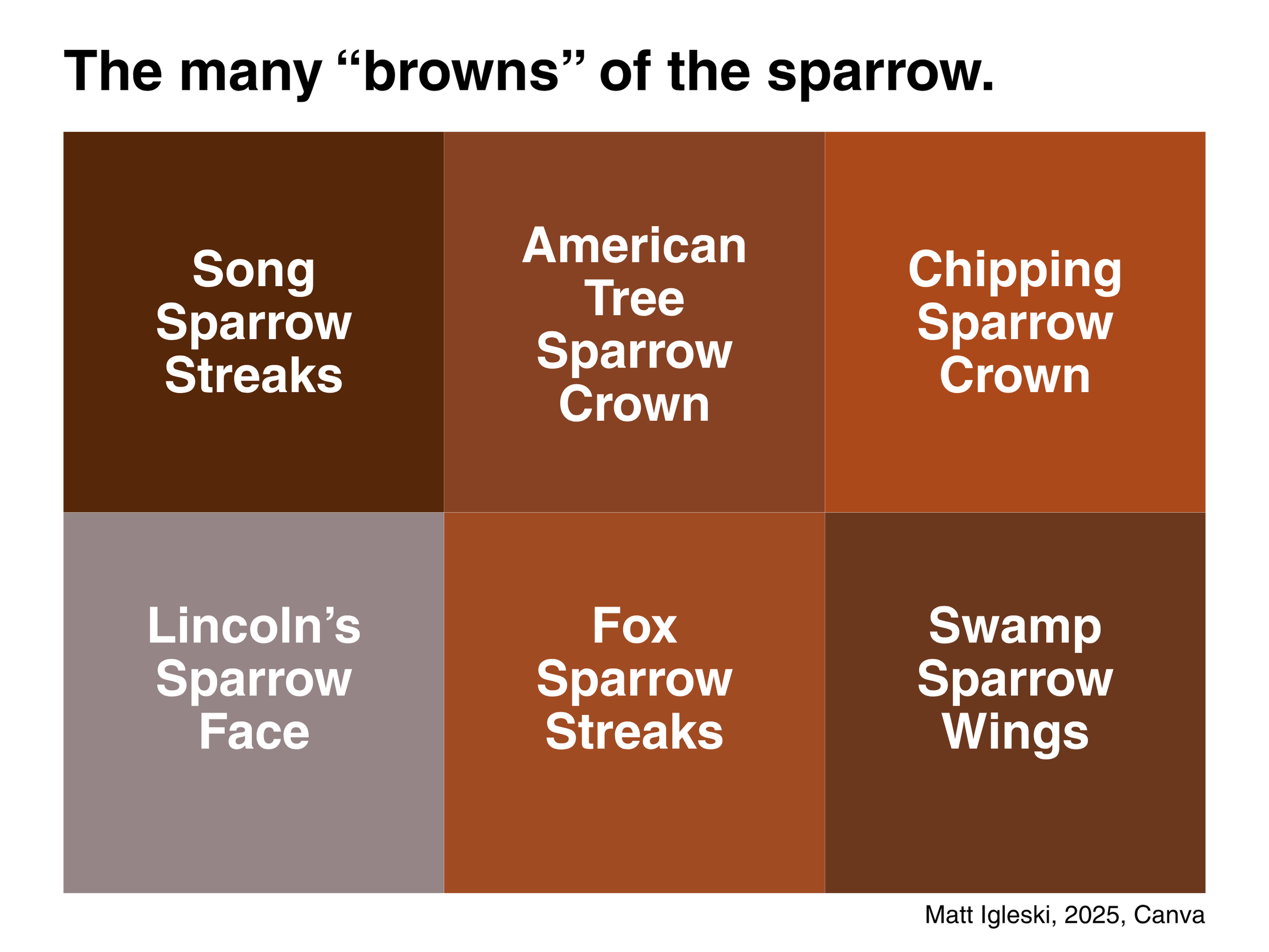*Sparrow ID quiz at the end of the article!
I often hear people refer to sparrows as LBBs or “Little Brown Birds,” which isn’t entirely inaccurate. However, I think that’s a rather fatalistic mindset when trying to identify such a fantastically diverse group of birds. Sparrows actually look pretty distinct from each other with a little careful observation. About 20 regularly occurring sparrow species breed in, migrate through, or visit our region each year!
Sparrows tend to be early migrants in spring and later migrants in the fall, meaning now is a great time to see sparrows as they migrate through our area. You can see in the Cook County Bar Chart graphic from eBird that several sparrow species arrive and/or peak in abundance in the county in October, e.g., American Tree Sparrow, Fox Sparrow, White-crowned Sparrow, and White-throated Sparrow. October is also a great time to see low-density but annual species like Nelson’s Sparrow and LeConte’s Sparrow (the orange-faced sparrows).
Several species peak in abundance in our area in October. The red box highlights a few examples. Link to eBird Cook, IL Bar Chart - https://ebird.org/barchart?r=US-IL-031
Generally, when I go through an ID exercise with a class or group, we talk about the broad strokes to focus on: Size & Shape, Color, Behavior, and Habitat. All of those are great to consider when identifying any bird. However, once you’ve determined that you’re looking at a migrant sparrow, those categories become more subtle to parse apart or altogether irrelevant.
Often during migration, you will be looking at mixed flocks of sparrows all feeding on the ground somewhere that may or may not be indicative of their “typical” habitat. For instance, White-throated Sparrows breed in shrubby, forested areas, but are often seen feeding in mowed park lawns during migration. So, behavior or habitat might not be of much use to note. But size, shape, and color are fairly different between different groups of sparrows – you just have to recalibrate your color palette. Think tan to walnut or chestnut rather than just “brown.”
The first tip I always give to first-time sparrow IDers is to look at the bird's breast. Is it streaky? Is it plain? Does it have a spot in the center? Just noting whether the breast is streaky or not will cut your sparrow choices in half. The central breast spot is another great characteristic to note, as it can quickly narrow down your sparrow options.
The second place to focus on is the head and face of the sparrow. Look for an obvious cap and the color, noticeable eyeline, an eye-ring, color in the lores (area between the eye and beak), and any other obvious features like an orange face, a white throat, etc.
Greg Neise with the American Birding Association made an excellent graphic showing these features for all of our common Eastern sparrows. Study his graphic below, and note that I’ve added different color boxes outlining the streaky versus non-streaky sparrows.
Of course, it takes practice to tease apart some of the species that might still look similar, like Song Sparrow versus Lincoln’s Sparrow. Since both of those have similar coloration, you’ll start to notice that Lincoln’s Sparrows have much finer streaking than Song Sparrows, which have “blurry” streaks. Overall, a Lincoln’s Sparrow’s features look like they were drawn with a very sharp pencil, and look more crisp than the blurred features of a Song Sparrow.
As you continue to carefully observe sparrows in the field, you’ll further train your eye for those subtle differences between similar species. One great free source to use as you study your sparrows is the Field Museum’s “Common Sparrows of Chicago” field guide available here as a PDF: https://science.fieldmuseum.org/fieldguides/guides/guide/881






